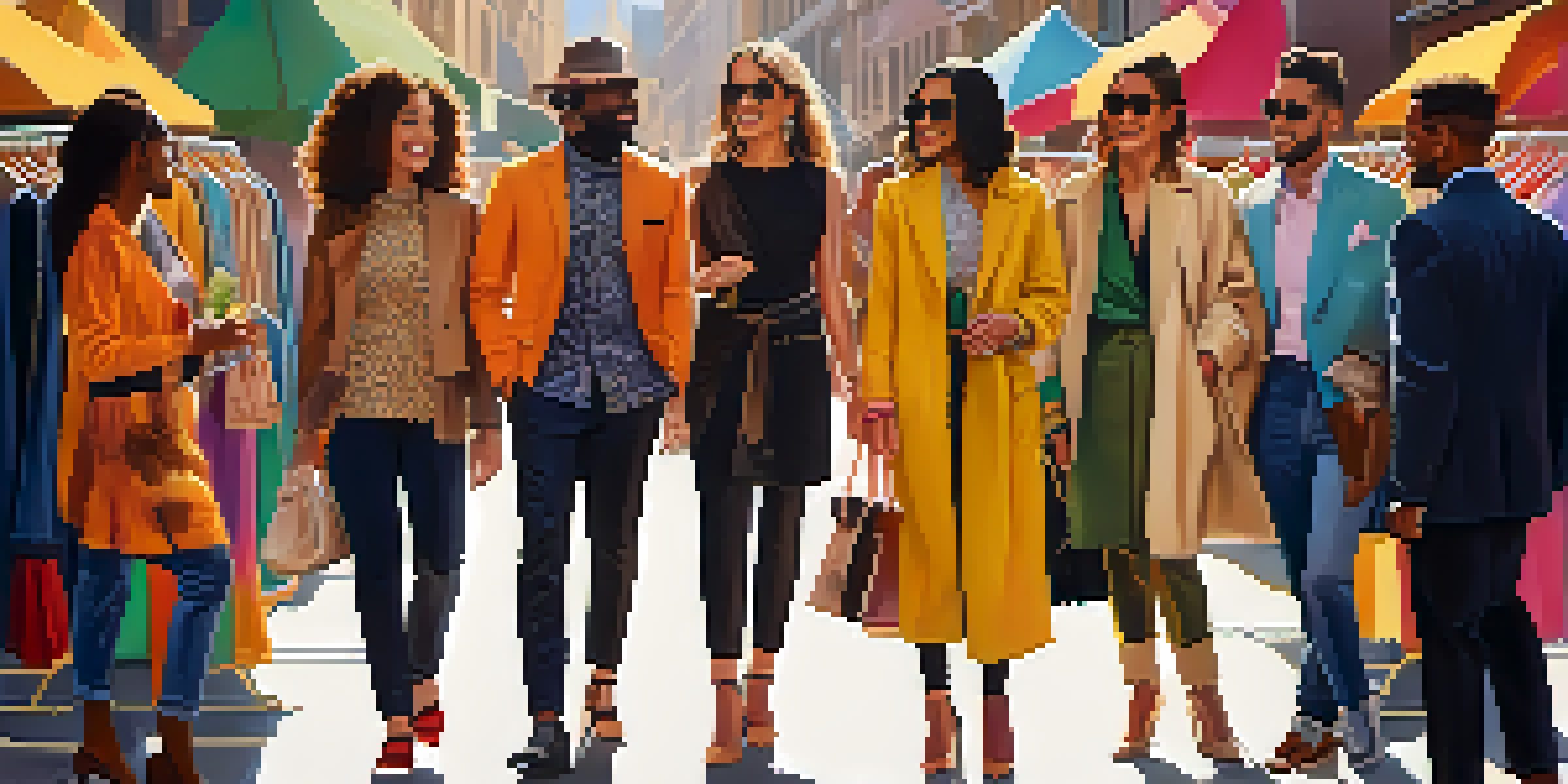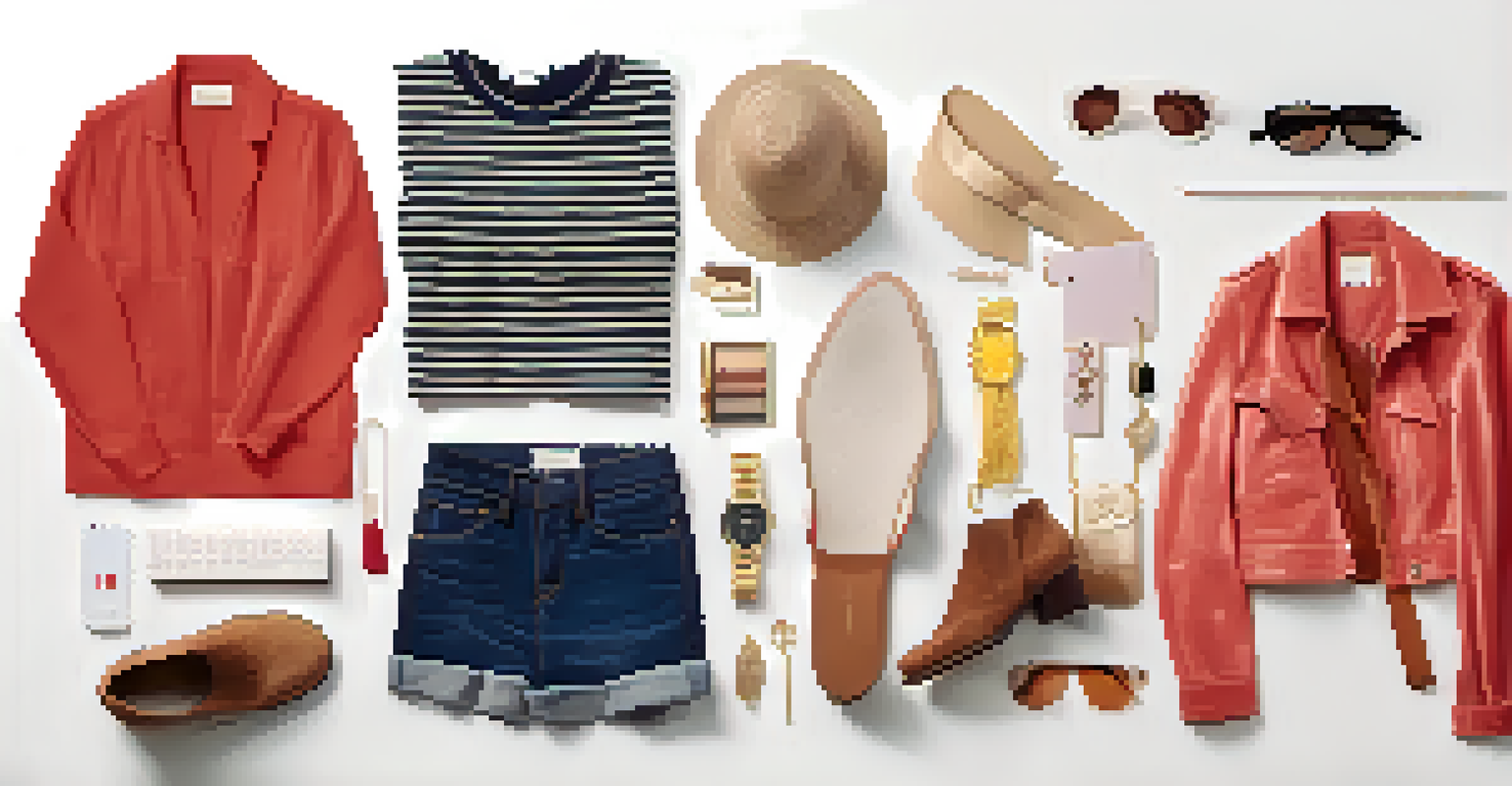The Power of Influencers in Fashion Brand Community Building

Understanding the Role of Influencers in Fashion
Influencers have become key players in the fashion industry, acting as bridges between brands and consumers. They possess the unique ability to connect with audiences on a personal level, fostering trust and relatability. By showcasing products in their daily lives, influencers create a narrative that resonates with followers, making fashion feel accessible and authentic.
People don’t buy what you do; they buy why you do it.
Moreover, influencers often have niche audiences that brands may find hard to reach through traditional marketing channels. This targeted approach allows for more meaningful interactions, as followers are likely to feel more connected to recommendations from someone they admire. Whether it’s through Instagram posts or TikTok videos, influencers craft compelling stories around fashion items that tap into their followers' aspirations.
As a result, brands are increasingly collaborating with influencers to build vibrant communities. These partnerships can elevate brand visibility and create a loyal customer base, as consumers often seek validation from those they follow. Ultimately, the influence of these individuals can lead to increased engagement and sales for fashion brands.
Building Authentic Connections Through Community
At the heart of influencer marketing is the concept of community. When influencers share their love for a brand, it invites their followers to join in the conversation, creating a sense of belonging. This can be particularly powerful in the fashion industry, where style is often seen as a personal expression of identity.

For instance, a fashion influencer who authentically shares their experiences with a brand can inspire their audience to adopt similar styles. This not only drives sales but also encourages followers to participate in the brand's community, whether through social media hashtags or brand events. Such interactions strengthen the bond between the brand and its consumers.
Influencers Connect Brands and Consumers
Influencers act as relatable figures who bridge the gap between fashion brands and their audiences, fostering trust and engagement.
Additionally, when followers feel included in a brand's story, they are more likely to become advocates themselves, sharing their experiences with friends and family. This organic word-of-mouth promotion amplifies the reach of both the influencer and the brand, solidifying the community even further.
The Impact of Social Proof in Fashion Marketing
Social proof plays a crucial role in how consumers make purchasing decisions, especially in fashion. When influencers showcase a product, they provide a form of validation that can influence their followers' choices. This is because people often look to others—especially those they admire—for guidance on what to wear and buy.
Content is fire; social media is gasoline.
For example, if a popular influencer sports a new dress from a lesser-known brand, their followers may perceive that brand as trendy and worth exploring. This effect is magnified when multiple influencers endorse the same product, creating a bandwagon effect. The more people see others wearing something, the more likely they are to want it for themselves.
This dynamic not only boosts sales but also enhances brand reputation within the community. Influencers act as tastemakers, shaping trends and preferences, which in turn helps fashion brands build a distinctive identity in the crowded marketplace.
Leveraging User-Generated Content for Deeper Engagement
User-generated content (UGC) is a powerful ally for fashion brands looking to engage their communities. When influencers encourage their followers to share photos or reviews of products, it creates a wealth of authentic content that brands can leverage. This not only showcases real customers enjoying their products but also fosters a collaborative spirit within the community.
For instance, a campaign that invites followers to post their outfits using a specific hashtag can generate buzz and excitement. This not only amplifies the reach of the brand but also allows customers to feel like active participants in the brand’s story. Their contributions become a part of the narrative, further solidifying their connection to the brand.
Community Drives Fashion Marketing
Building a sense of community around a brand encourages followers to engage and share their experiences, enhancing brand loyalty.
Moreover, UGC can serve as social proof, reinforcing the idea that a product is desirable and popular. When potential customers see real people enjoying a product, they are more likely to trust its quality and make a purchase. In this way, influencers help brands cultivate a vibrant community centered around shared experiences.
The Evolution of Influencer Marketing Strategies
Influencer marketing strategies in the fashion industry are constantly evolving, adapting to changes in technology and consumer behavior. Brands are now moving beyond one-time partnerships, focusing on long-term relationships with influencers who embody their values. This shift helps create more genuine endorsements that resonate with audiences.
Additionally, the rise of micro-influencers—those with smaller but highly engaged followings—has transformed how brands approach influencer collaborations. These influencers often have a more intimate connection with their audiences, making their recommendations feel more personal and trustworthy. As a result, fashion brands are increasingly tapping into this segment to reach niche markets.
Innovative campaigns, like co-designing products with influencers, are also gaining traction. By involving influencers in the creative process, brands can harness their insights and style to produce items that truly resonate with their shared audience. This collaborative approach not only enhances brand loyalty but also enriches the community experience.
Navigating Challenges in Influencer Partnerships
While influencer partnerships offer immense potential, they also come with challenges that brands must navigate. One significant concern is ensuring that the influencer's values align with the brand's message. A mismatch can lead to confusion among consumers and potentially harm the brand's reputation.
Moreover, the fast-paced nature of social media means that trends can change overnight. Brands need to remain agile and adapt their strategies quickly to stay relevant. This can be particularly challenging when working with influencers, as their content styles and audience preferences may evolve.
Measuring Campaign Success Matters
Tracking key performance indicators (KPIs) helps brands assess the effectiveness of influencer partnerships and refine their strategies.
Lastly, transparency is crucial in influencer marketing. Followers appreciate honesty, and undisclosed sponsorships can lead to distrust. Brands must ensure that their influencers clearly communicate their relationships, maintaining authenticity and integrity within the community.
Measuring the Success of Influencer Campaigns
Measuring the success of influencer campaigns is vital for understanding their impact on brand community building. Key performance indicators (KPIs) such as engagement rates, follower growth, and conversions provide valuable insights into the effectiveness of these partnerships. Brands should establish clear goals before launching campaigns to gauge their success accurately.
Additionally, sentiment analysis can be an effective tool for assessing community perception. By analyzing comments and feedback from followers, brands can gain a deeper understanding of how their audience feels about their products and influencer collaborations. This feedback is invaluable for refining future strategies.

Ultimately, successful measurement allows brands to fine-tune their influencer marketing efforts, ensuring that they continue to resonate with their community. By being proactive in evaluating their campaigns, brands can foster stronger relationships with both influencers and consumers.